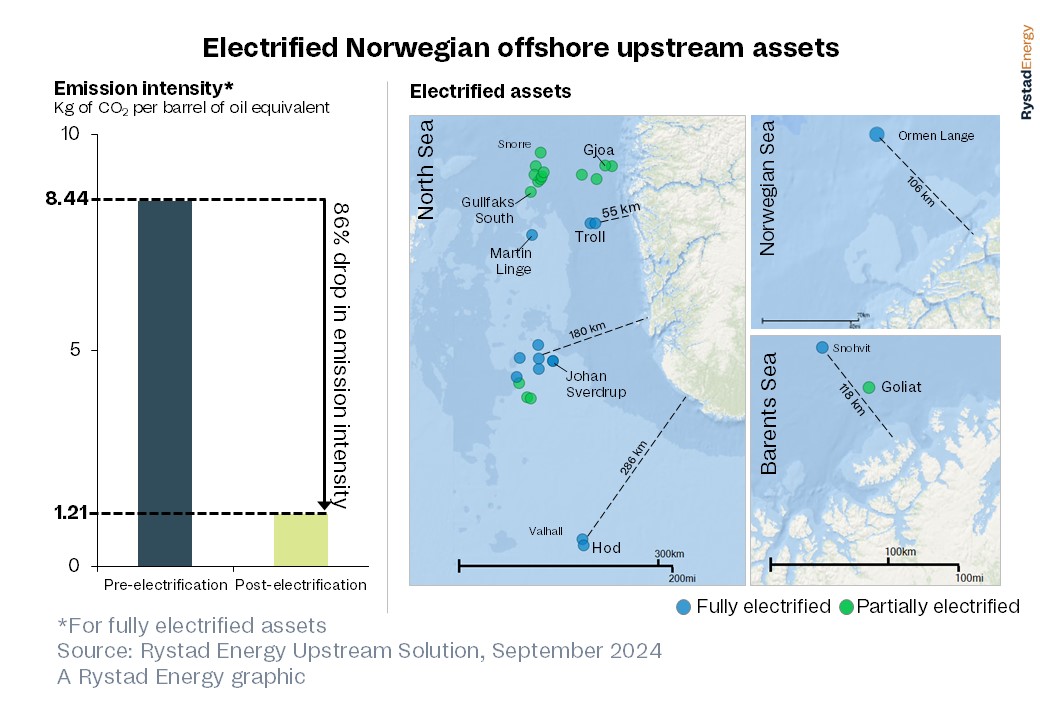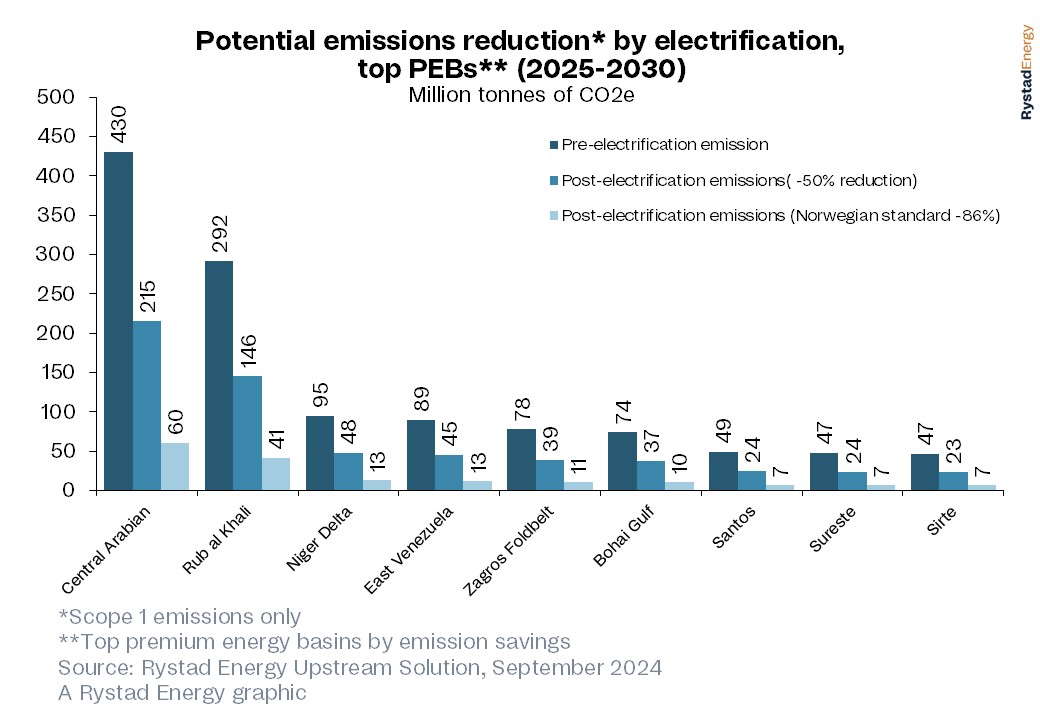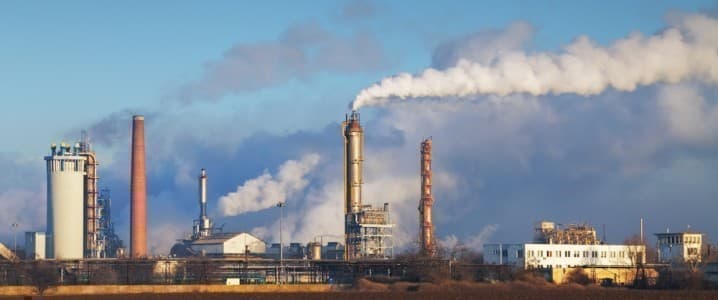Converting upstream oil and gas production facilities to run on electricity powered by renewables or natural gas that would otherwise be flared could cut more than 80% of associated emissions, according to new research from Rystad Energy. Fully electrified rigs and other assets on the Norwegian Continental Shelf emit 1.2 kilograms of carbon dioxide per barrel of oil equivalent (kg of CO2 per boe) produced, an 86% drop from the 8.4 kg of CO2 per boe emitted by the same assets before electrification.
Norway is in a prime position that is almost unique among major oil and gas producers – it can tap into its abundant renewable energy resources, particularly hydroelectric power, to significantly reduce greenhouse gas emissions from upstream production. The country was an early mover in refitting its assets to run on clean power, and now has plans to cut emissions from the continental shelf by 70% by 2040. Most of the country’s key production sites are strategically located near potential renewable energy sources, facilitating the transition away from fossil fuels. Other producing countries may face logistical hurdles when converting assets, including significant distances from the mainland, a lack of power grid infrastructure and limited renewable power capacity.
However, even a partial electrification will significantly cut emissions. Premium energy basins (PEB) – a term coined by Rystad Energy to describe oil and gas basins with ample hydrocarbon reserves and the potential to incorporate environmentally friendly practices – could hold the key. We have identified 30 such basins worldwide, which collectively contribute more than 80% of the world’s oil and gas this year and will continue to do so until 2050. If PEB assets electrify and reduce emissions by 50%, a total of 5.5 gigatonnes of carbon dioxide (Gt of CO2) would be avoided by 2050. Based on the accepted industry standard calculation, this CO2 reduction would equate to about 0.025 degrees Celsius of global warming avoided during the same period.*
As the world confronts the pressing issue of climate change, the oil and gas industry is under increasing pressure to minimize its carbon footprint and align its practices with global sustainability objectives. Where it’s possible and economically viable, electrification has great potential to lower the industry's emissions while maintaining production output. says Palzor Shenga, vice president of upstream research with Rystad Energy.
Palzor Shenga, Vice President, Upstream Research
*This calculation only includes upstream extraction emissions. It assumes that 222 GtCO2 emitted leads to 0.1°C warming, ref IPCC AR6 SPM D.1.1: "best estimate for TCRE is 0.45 degree per 1000 Gt CO2". Methane emissions are disregarded.

Learn more with Rystad Energy’s Upstream Solution.
Electrification requires careful planning, including the selection of optimal technologies, assessment of total costs and strategies to ensure a continuous energy supply, particularly in remote locations with limited grid access. Economic and financial viability must also be prioritized. A proactive approach to electrification can enhance operational efficiency and open new revenue streams through the sale of excess renewable energy.
To understand the impact of electrification on upstream emissions, we examined the potential for emission reduction in top PEBs. The 28 PEBs identified in the report offer estimated total emission savings of about 1.3 billion tonnes of CO2 between 2025 and 2030. The top 10 PEBs (by emissions savings) alone account for over 80% of these savings (Figure 3), with the Middle Eastern Rub al Khali (370 million tonnes of carbon dioxide equivalent [CO2e]) and Central Arabian (251 million tonnes of CO2e) leading the charts. Electrification in these predominantly onshore basins, if adopted more widely, would largely be driven by drawing power from a clean onshore grid.

Flaring, the practice of burning off excess natural gas that cannot be processed or sold, not only wastes a valuable resource but also emits substantial amounts of CO2 and methane into the environment. Flaring plays a major role in global emissions primarily due to the lack of economic incentives, regulatory frameworks or technical capabilities to develop gas markets and infrastructure. About 140 billion cubic meters per annum of gas has been flared globally in the last 10 years, equaling about 290 million tonnes of CO2e emissions annually. These volumes are primarily driven by major producers in North America, the Middle East and Africa. Hence, flaring avoidance can be an effective way of reducing upstream emissions for both electrified assets and assets with limited electrification potential.
ADVERTISEMENT
More Top Reads From Oilprice.com
- UK Cracks Down on Iranian Oil Tycoon's London Entity
- The Politics Behind EU Sanctions
- Biden's Tariff Crackdown Upends Amazon and Walmart's China Strategy


















